vintage cameras index home
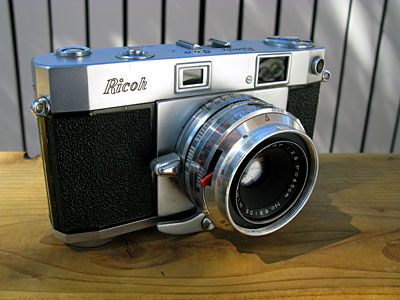
Ricoh 500 with Seikosha-MXL shutter and Riken Ricomat f2.8 45mm lens
Some sample pictures from the Ricoh 500
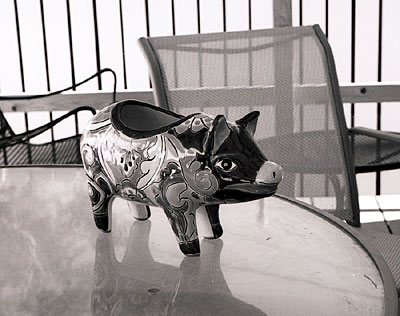
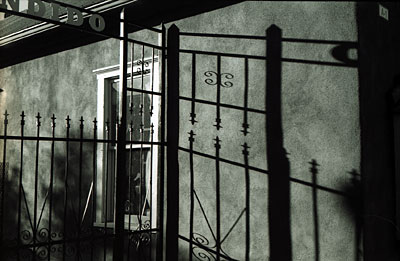
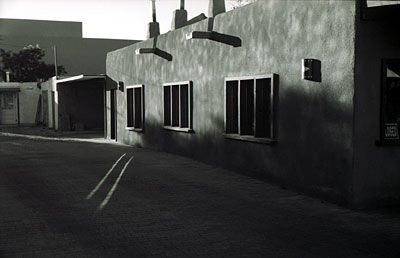

When I came across some rather nice images that others had made with the same camera I decided it was time to revisit the Ricoh. This time I removed the lens retaining ring and screwed out the front lens group so I could get access to the shutter blades to clean them. More importantly, I correctly reset the infinity focus using the collimation process described by Mike Elek.
There are a couple important lessons in the history of my experience with the Ricoh 500. The first is that a lot of people who draw conclusions about the capabilities of old cameras are basing them on a sample of one. So it may be perfectly true that some reviewer found their pictures from the Ricoh to be unsharp or lacking in contrast. The reasons for that poor performance, however, may very likely have much more to do with a whole host of variables other than lens quality. The lesson is to be appropriately critical of limited sampling, regardless of the renown of the reviewer.
The other lesson, which I seem to require relearning periodically, is that it is important to check the infinity focus on any newly-acquired old camera. I would guess that about half the cameras in my collection required re-collimation of the lens to establish proper focus. Somewhere in the life of nearly every old camera some well-meaning owner has decided to remove the lens to clean it, and then fails to properly reset the infinity focus. It sometimes seems improbable that the focus setting would be off, particularly in fixed lens cameras, but failing to check for that possibility can lead to some real hair pulling in trying to understand why images from a camera don't live up to expectations.
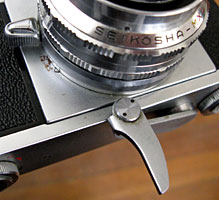 The feature of the Ricoh 500 that will initially grab attention is the bottom-mounted lever film advance. The articulated handle folds nicely out of the way when not in use. Flipping down the lever's tip makes it instantly ready for action. The lever action is smooth and quick, and advancing the film requires no movement of the camera away from the eye.
The feature of the Ricoh 500 that will initially grab attention is the bottom-mounted lever film advance. The articulated handle folds nicely out of the way when not in use. Flipping down the lever's tip makes it instantly ready for action. The lever action is smooth and quick, and advancing the film requires no movement of the camera away from the eye.
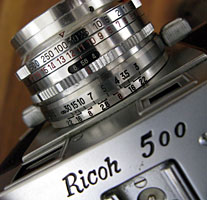 All of the camera's settings are incorporated into the lens mount and all are easily viewed with the camera just below eye level. Like many of the 35mm cameras of the day, the Ricoh 500 was equipped with the light-value system in which the speed and aperture are coupled. Having the aperture change when you change the shutter speed has always seemed a nuisance to me, but many photographers apparently liked the idea.
All of the camera's settings are incorporated into the lens mount and all are easily viewed with the camera just below eye level. Like many of the 35mm cameras of the day, the Ricoh 500 was equipped with the light-value system in which the speed and aperture are coupled. Having the aperture change when you change the shutter speed has always seemed a nuisance to me, but many photographers apparently liked the idea.
The removable back on the Ricoh 500 provides easy access for film loading, and the construction is such that no foam light seal is required -- quite a rarity among Japanese cameras. The materials, construction and workmanship of the camera are otherwise about average for the 1950's period. The camera's action will get a bit loose with extended use, and the attractive but thin finish will show some tarnish and wear.
The Ricoh 500 Manual is at the Butkus site.
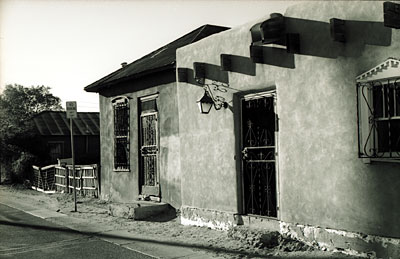
vintage cameras index home
 © mike connealy
© mike connealy